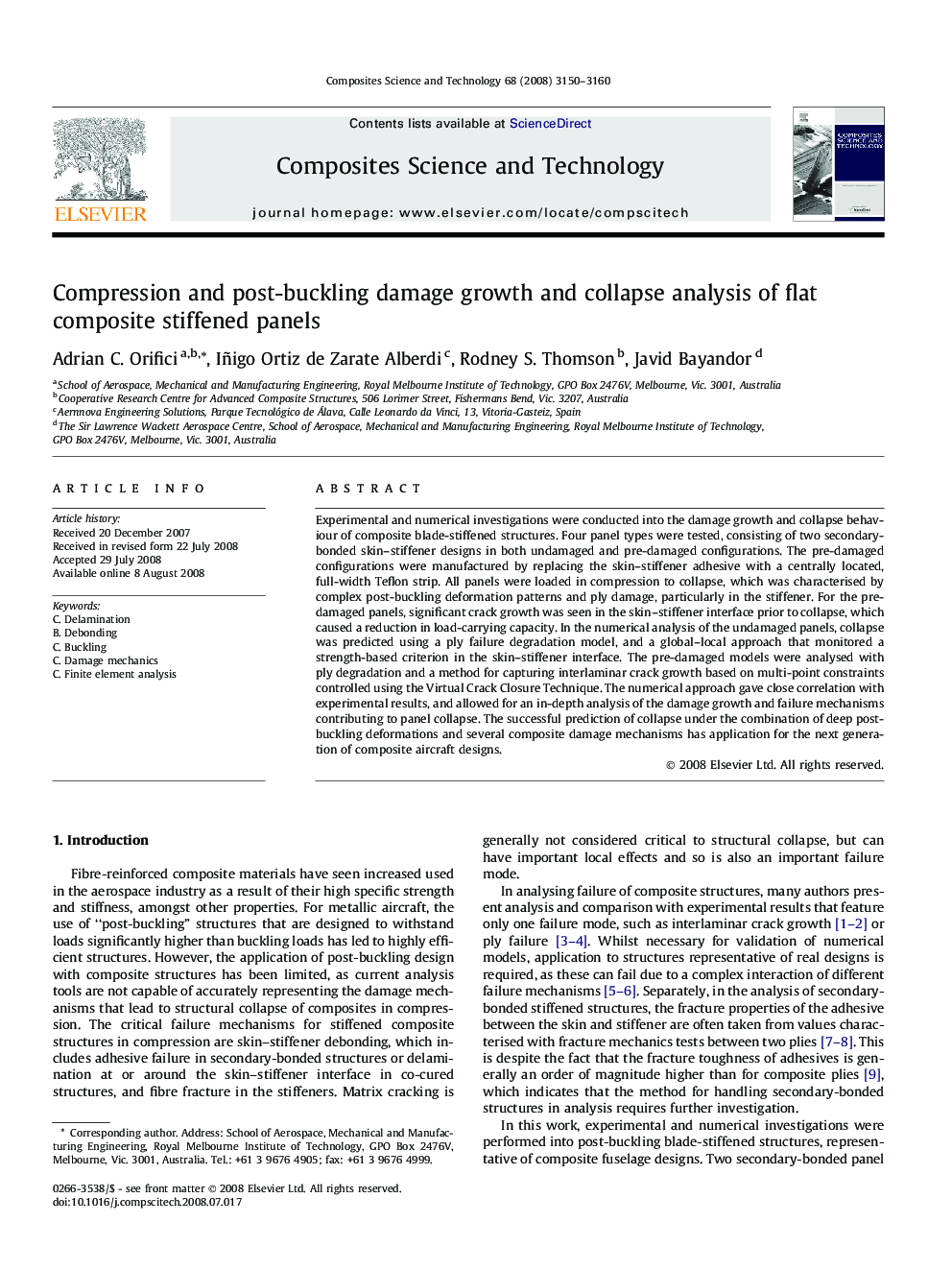| کد مقاله | کد نشریه | سال انتشار | مقاله انگلیسی | نسخه تمام متن |
|---|---|---|---|---|
| 821759 | 1469558 | 2008 | 11 صفحه PDF | دانلود رایگان |

Experimental and numerical investigations were conducted into the damage growth and collapse behaviour of composite blade-stiffened structures. Four panel types were tested, consisting of two secondary-bonded skin–stiffener designs in both undamaged and pre-damaged configurations. The pre-damaged configurations were manufactured by replacing the skin–stiffener adhesive with a centrally located, full-width Teflon strip. All panels were loaded in compression to collapse, which was characterised by complex post-buckling deformation patterns and ply damage, particularly in the stiffener. For the pre-damaged panels, significant crack growth was seen in the skin–stiffener interface prior to collapse, which caused a reduction in load-carrying capacity. In the numerical analysis of the undamaged panels, collapse was predicted using a ply failure degradation model, and a global–local approach that monitored a strength-based criterion in the skin–stiffener interface. The pre-damaged models were analysed with ply degradation and a method for capturing interlaminar crack growth based on multi-point constraints controlled using the Virtual Crack Closure Technique. The numerical approach gave close correlation with experimental results, and allowed for an in-depth analysis of the damage growth and failure mechanisms contributing to panel collapse. The successful prediction of collapse under the combination of deep post-buckling deformations and several composite damage mechanisms has application for the next generation of composite aircraft designs.
Journal: Composites Science and Technology - Volume 68, Issues 15–16, December 2008, Pages 3150–3160